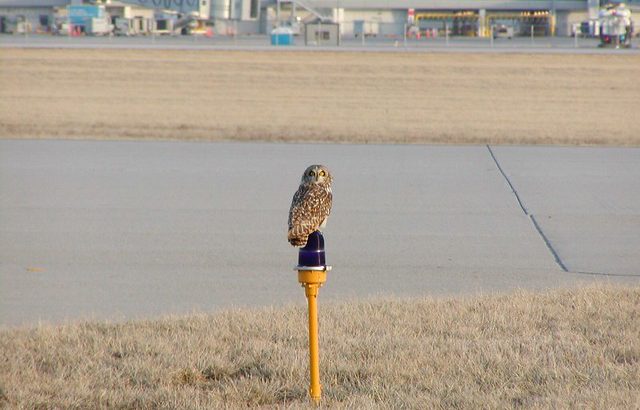A variety of wildlife species—from birds to rodents and rabbits—often visit airport environments leading to safety concerns for both wildlife and airline passengers. Collisions between wildlife and aircraft have increased in the past 30 years because of an increase in both hazardous wildlife species populations and aircraft movements. To help reduce the risk of these potentially dangerous interactions, USDA-APHIS Wildlife Services (WS) biologists provide airport operators across the Nation with advice and recommendations on how to keep runways and flight paths clear of wildlife.
“As part of an effort to help guide recommendations on the use of a naturally occurring wildlife repellent at airports, WS is planning a series of trials at airports in several states,” states WS research wildlife biologist Dr. Scott Werner.
This year, WS researchers and airport biologists from eight states are partnering with Arkion Life Sciences, LLC to identify best management practices for applying an anthraquinone-based repellent called Flight Control® Max. Anthraquinone is a naturally occurring compound that is found in more than 200 plant species in North America. When eaten, anthraquinone has a repellency effect in many wild birds and some wild rodents.
“Arkion is providing their wildlife repellent for use in field trials at approximately 12 military, civil and joint-use airports nationwide,” continues Werner. “The repellent will be applied at various locations on our cooperating airports. WS airport biologists will then survey and compare the wildlife on treated and nearby untreated locations. Results will help us identify what worked and what didn’t work and will be the basis for recommended best management practices for use of the repellent at airports.”
WS plans to make its findings known later this year. For more information, please visit the WS National Wildlife Research Center’s Repellents Research Project and WS National Airport Wildlife Hazards Program websites.



